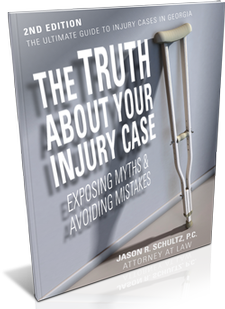Understanding a Trucker's Blind Spots
The size of a semi truck leaves several areas the trucker's mirrors cannot reach. These areas are called the "blind spots" or "no zone," and they can be a hazardous place to ride alongside a truck. When driving in front of or behind a truck, make sure to allow a good amount of space between you and the truck. This means not changing lanes too close in front of the truck and not tailgating. Trucks cannot stop abruptly for a car entering the lane too closely, and you are likely to be hit from behind. Likewise, if you are behind a truck and cannot see what's going on in front of it, you may be unaware that the truck is stopping and have no time to stop yourself.
The left side of a truck directly behind the driver's side window is a blind spot because your vehicle is too close to appear in the mirror, yet too far back to be seen by a driver glancing to the side. If you are in this area, speed up to pass the truck or slow down to get into an area where you can be seen and see the trucker's directional signals to anticipate a lane change or turn.
The right side of a truck has the largest no zone. The space directly to the right of the truck's cab starts a blind spot that extends diagonally back and into the far right lane. The general rule is that if you cannot see the driver's face in the truck's mirrors, it's a good chance that he cannot see you and potentially could cause an accident by changing lanes or turning when he believes the road is clear.
Watch for Trucks Making Right Turns and Backing Up
When a tractor-trailer truck makes a right turn at an intersection while you are riding behind it, you'll want to back off and allow the trucker to make his or her move. Trucks may have to swing wide to the left first before turning back to the right in order to clear the curb. If you take that slight motion to the left as a sign that the truck is changing lanes or turning left and you speed up to pass, you could be caught against the truck and the curb in a situation known as "squeeze play." If there's no soft shoulder to veer onto, you could be crushed between the truck and whatever kind of barrier there is on the roadside.
When a truck starts backing up, it may not have the same backup lights as passenger vehicles to signal its intention. Most trucks are equipped with a high-pitched warning signal, but that can be drowned out if your radio is too loud or you are busy with a phone or passenger conversation. Also remember that truck drivers do not have a rearview mirror to look for obstacles behind them as they back up, so it's up to you to protect yourself by watching for trucks in reverse.
Don't Become the Next I-285 Crash News Story -- Drive Safely Around Trucks!
Because so many large trucks use interstate highways and their smaller state highway branches to bring goods in and out of Atlanta, there's barely a moment when you won't see a large truck on the road during your travels. Giving trucks a wide distance and staying alert at all times can help you avoid the common types of truck accidents we hear about on the news every day.
The Law Office of Jason R. Schultz, P.C is here to help victims of truck accidents and their families recover damages when a negligent truck driver causes a serious crash. Contact our office today and schedule your FREE consultation to discuss your legal options. 404-474-0804.


